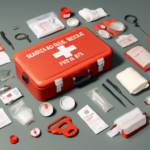In an unpredictable world where emergencies can strike at any moment, ensuring the safety of students and staff is paramount for education institutions. First aid kits for schools are not merely a luxury; they are a vital component of a comprehensive safety strategy. With the increasing complexity of school environments, from classrooms to commercial kitchens, the demand for tailored first aid solutions has never been higher.
2024 marks a pivotal year for educational facilities as they reassess their safety protocols and resources. This comprehensive guide delves into the essential elements that make up effective first aid kits suitable for various school settings. Whether it’s addressing minor injuries in a classroom, handling culinary mishaps in the kitchen, or preparing for potential incidents on construction sites, having the right tools readily available can significantly impact outcomes in emergencies.
This article aims to equip school administrators, health personnel, and even educators with the knowledge needed to select, customize, and effectively maintain a robust first aid kit. By addressing unique needs—including those for commercial kitchen first aid kits and construction first aid kits—we will pave the way for safer learning environments in 2024 and beyond.
Why Every School Needs a Comprehensive First Aid Kit in 2024

Immediate Response to Emergencies
In any school environment, accidents can happen at any moment. Having a comprehensive first aid kit for schools ensures that staff and students can respond swiftly to injuries such as cuts, burns, or allergic reactions. Quick access to medical supplies not only provides immediate relief but can also prevent a situation from escalating. 🏃♂️💨
Compliance with Safety Regulations
Schools must adhere to local safety regulations, which often require them to have a well-stocked first aid kit. This includes specific items mandated for various environments, including classrooms, gyms, and even outdoor areas. Compliance not only protects the school legally but also fosters a culture of safety, reassuring parents and guardians about the school’s commitment to student wellbeing. 📃✔️
Addressing Diverse Needs Across Different Areas
Different areas of a school may require specialized kits. For example, a commercial kitchen first aid kit should include supplies for handling burns and food-related allergies, while a construction first aid kit is crucial for maintenance and repair activities on school properties. Each kit should be tailored to address potential risks unique to its environment. 🔧👷♀️
Promoting Health Education and Awareness
Equipping schools with comprehensive first aid kits opens the door for health education initiatives. Schools can incorporate training sessions on how to use these kits effectively, teaching students essential life-saving skills. This not only empowers students but also enhances the overall safety culture within the institution. 📚🩹
Encouraging Preparedness and Responsibility
Having well-stocked safety kits for construction sites and general first aid kits instills a sense of preparedness among students and staff. When everyone knows where to find medical supplies and how to use them, it promotes a responsible attitude towards health and safety. This proactive approach can significantly reduce anxiety during emergencies, allowing for a more focused and calm response. 🙌🛡️
Top Features to Look for in a First Aid Kit for Schools
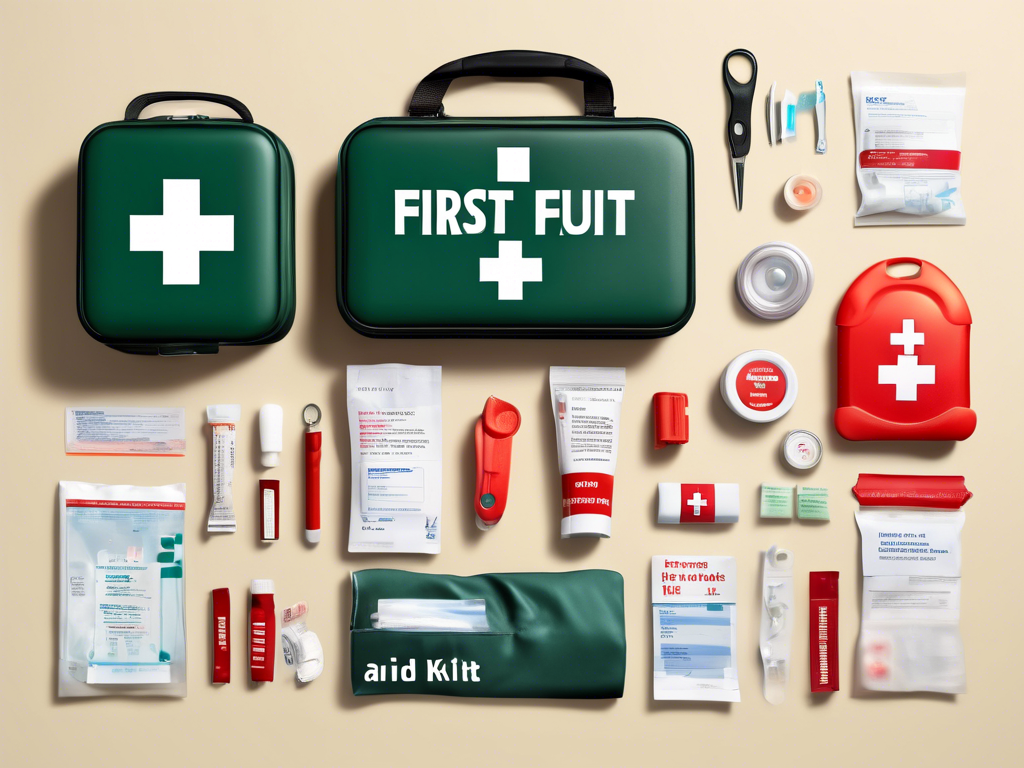
Comprehensive Medical Supplies
When selecting a first aid kit for schools, it is essential to ensure that it contains a variety of medical supplies. A well-equipped kit should include items such as adhesive bandages, antiseptic wipes, gauze pads, and burn cream. Consider specific needs based on school activities; for instance, a commercial kitchen first aid kit should have supplies tailored for kitchen-related injuries, like burns or food allergies. Here’s a quick checklist of necessary items:
- Adhesive bandages of various sizes
- Antiseptic solutions
- Gauze and tape
- Burn dressings
- Gloves and masks
🩹🩺
Easy Accessibility and Organization
A crucial feature of any first aid kit is its organization. Schools should opt for kits with clear compartments and labels, making it easy to find supplies during emergencies. When time is of the essence, a chaotic or poorly organized kit can hinder effective response. Ensure that the kit is placed in a central location known to all staff members, facilitating quick access in case of an incident. 🔍🏫
Durability and Longevity
Given the everyday wear and tear a first aid kit for schools may encounter, choosing a durable container is vital. Look for kits made from robust materials that can withstand pressure and impact. Additionally, check the expiry dates on supplies and choose kits that allow easy replenishment of items, ensuring they are always ready when needed. The durability of the kit helps maintain its integrity in both classroom and outdoor settings. 🎒🔧
Customization for Specific Environments
Different areas within a school may require specialized first aid kits. For example, a construction first aid kit must include items tailored to common injuries in construction zones, such as heavy-duty gloves, splints, and eye protection supplies. The ability to customize kits based on specific environments or extracurricular activities ensures that potential risks are adequately addressed. Schools should assess their unique needs and adjust their first aid supplies accordingly. 🏗️📋
Training and Instruction Resources
An often-overlooked feature is the inclusion of training materials within the safety kits for construction sites and general first aid kits. These resources can guide staff and students on how to use the provided supplies effectively. Training can cover basic first aid procedures, CPR techniques, and emergency action plans, empowering everyone in the school community to act confidently in emergencies. 📖🚑
Compliance with Local Regulations
Finally, ensure that the selected first aid kit complies with local health and safety regulations. Different regions may have specific requirements concerning the contents and maintenance of first aid kits in schools. By adhering to these regulations, schools not only foster a safer environment but also protect themselves legally, contributing to a culture of health and safety throughout the institution. 📜✅
Essential Items for Your Commercial Kitchen First Aid Kit
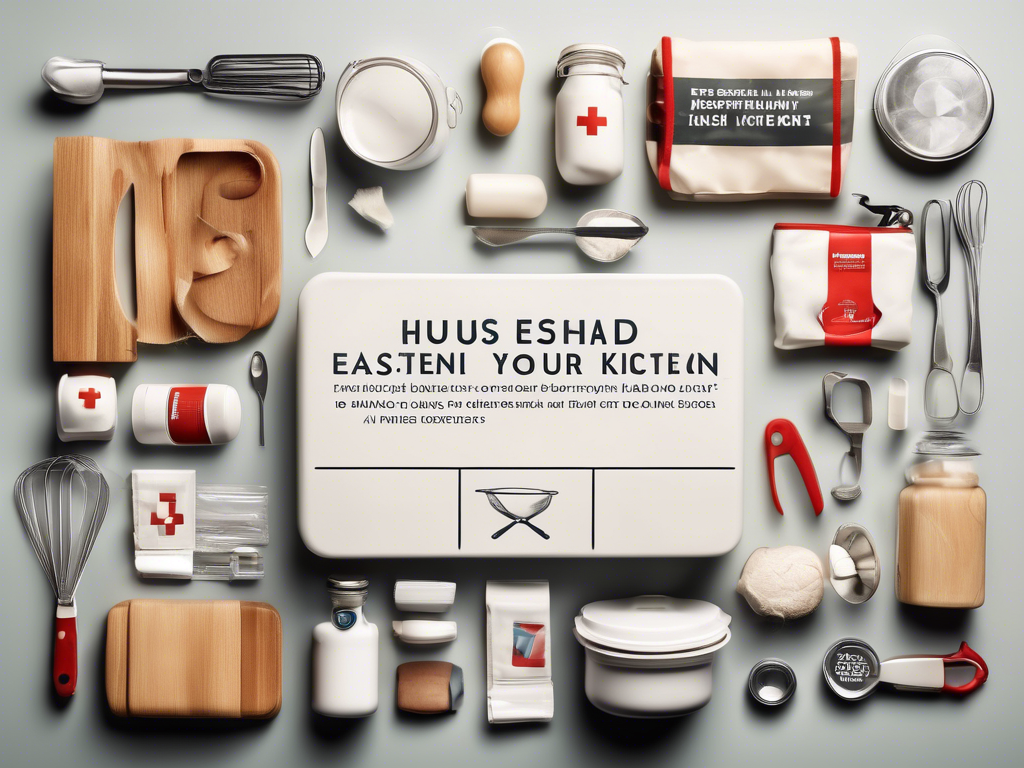
Burn Treatment Supplies
In a commercial kitchen setting, burn injuries are among the most common accidents. Therefore, having adequate burn treatment supplies is crucial. Your commercial kitchen first aid kit should include items like:
- Burn dressings
- Hydrogel burn pads
- Creams and ointments to soothe burns
These supplies will help to quickly address minor burns and prevent infection, allowing kitchen staff to maintain their focus on food preparation and safety. 🔥🥘
Bandages and Dressings
A variety of bandages and dressings is essential for treating cuts, scrapes, or lacerations that can occur during food prep or equipment use. The following items should be included in your first aid kit for schools with commercial kitchens:
- Adhesive bandages in multiple sizes
- Gauze pads and rolls
- Elastic bandages for sprains
These items ensure that any injuries can be promptly covered and treated, minimizing further complications. 🩹🍴
Antiseptics and Cleaners
To prevent infections, your commercial kitchen first aid kit must contain effective antiseptics. Include:
- Antiseptic wipes
- Hydrogen peroxide or iodine solution
- Alcohol swabs
These products allow for quick and efficient cleaning of wounds before applying dressings. Proper sanitation is vital for maintaining health in a kitchen environment. 🧼✨
Allergy Medications
Food allergies can pose serious risks in a commercial kitchen. It’s essential to have medications that can manage allergic reactions. Include epinephrine auto-injectors (EpiPens) and antihistamines in your first aid kit for schools. This preparedness demonstrates a proactive approach to handling potential allergy emergencies effectively. 🚑🌾
Emergency Contact Information
An often overlooked but vital component of a commercial kitchen first aid kit is emergency contact information. Ensure you have:
- Contact numbers for local emergency services
- A list of staff who are trained in first aid and CPR
- Information on nearby hospitals and urgent care facilities
Having quick access to this information can be critical in an emergency situation, allowing for prompt action when needed. 📞🏥
Training Materials
Lastly, consider incorporating training materials on first aid practices specific to kitchen scenarios. Instructions on how to handle burns, allergic reactions, or cuts can empower staff members to act decisively during emergencies. Having these resources in your safety kits for construction sites as well can improve overall safety culture in commercial kitchens. 📖👨🍳
Construction First Aid Kits: Safety Essentials for Educational Facilities
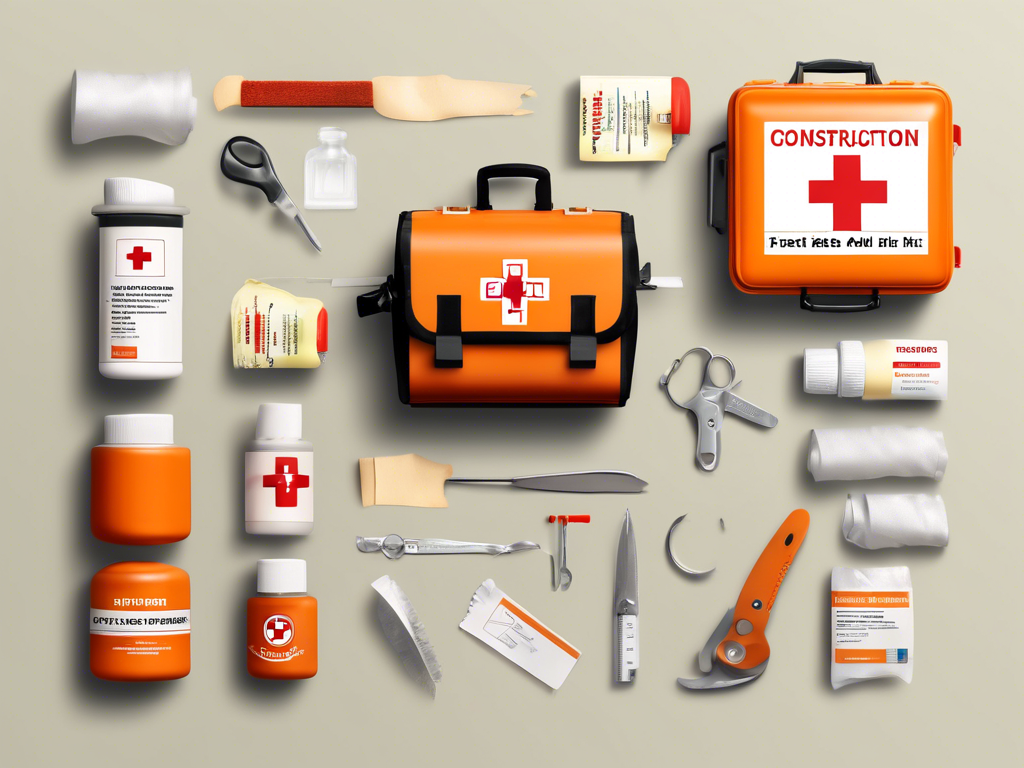
Understanding the Importance of a Construction First Aid Kit
In educational facilities where maintenance and renovation projects often occur, having a specialized construction first aid kit is essential. These kits are designed to address the unique hazards faced on construction sites, such as cuts, scrapes, and injuries from heavy machinery. Ensuring that your school has this type of kit can drastically reduce response time during an emergency and improve outcomes for injured individuals. 🏗️🩺
Essential Items for Your Construction First Aid Kit
A well-equipped construction first aid kit should include supplies tailored to common injuries associated with construction work. Consider incorporating the following items:
- Heavy-duty adhesive bandages
- Sterile gauze pads and wrap
- Burn dressings to treat thermal injuries
- Splints for stabilizing fractures
- Eye wash solution for chemical exposure
- Cut-resistant gloves
Having these items readily available can make a significant difference in the immediate treatment of injuries on a school construction site. ⚠️👷♂️
Location and Accessibility of the Kit
Placement of the safety kits for construction sites is crucial for effective use. It’s imperative that the kit is easily accessible at all times, ideally situated near high-risk areas of activity. Make sure all staff, including those who might be less familiar with the site, know where to find the kit. Consider using clear signage and conducting regular training sessions to ensure everyone is informed. This proactive measure can save precious time during emergencies. 🗺️🚪
Training and Preparedness for Emergencies
It’s not enough to just have a construction first aid kit; staff and students must know how to use its contents effectively. Provide training sessions focused on first aid procedures relevant to construction site injuries, such as treating lacerations or performing CPR. Including drills and refresher courses will ensure that everyone feels confident and prepared to act in case of an emergency. Knowledge combined with the right tools creates a safer school environment. 📚📋
Regular Maintenance and Inventory Checks
To ensure that a construction first aid kit is always functional, schools need to implement a regular maintenance schedule. This includes checking expiry dates on supplies, replenishing used items, and ensuring the kit remains organized. Additionally, consider appointing a safety officer to oversee this process, so the kit remains up-to-date and ready for use when needed. It’s a small investment of time that pays off by enhancing the safety culture within the school. 🔄🔧
Compliance with Safety Regulations
When it comes to maintaining a first aid kit for schools, compliance with local safety regulations is paramount. Ensure that your construction first aid kit meets all legal requirements concerning contents and maintenance protocols. This not only helps protect the school legally but also fosters a sense of security among staff, students, and parents. Adhering to these guidelines reinforces the school’s commitment to providing a safe learning environment. 📜✔️
Customizing Your School’s First Aid Kit for Unique Needs

Assessing Potential Risks in Different Areas
To effectively customize your first aid kit for schools, it’s crucial to assess the potential risks unique to various areas within the school. For instance, a commercial kitchen first aid kit must be stocked with supplies for burn treatment and allergy management, while a construction first aid kit should include items designed to address injuries from tools and heavy machinery. Conducting a thorough risk assessment ensures that your kits will adequately address the specific hazards present in each environment. 🛠️🏫
Tailoring Kits for Extracurricular Activities
Extracurricular activities, such as sports and arts, can also present unique risks. It’s a good idea to tailor your first aid kit for schools to cater to these activities. For example, consider including:
- Heat packs and ice packs for sports-related injuries
- Wraps and support braces for sprains
- Specialized first aid supplies for art classes, such as glue solvent and bandages for cuts
By preparing kits that specifically address the needs of extracurricular programs, schools can foster a safer and more supportive environment for students. 🎨⚽
Incorporating Feedback from Staff and Students
Engaging staff and students in the customization process can lead to more effective safety kits for construction sites and general first aid kits. Encourage them to share their experiences related to past incidents, which items they believe are essential, and any specific allergies or medical conditions that should be considered. Incorporating this feedback ensures that the kits truly reflect the community’s needs and enhances the overall preparedness of the school. 📣🤝
Regular Review and Updates of Kit Contents
Establishing a routine for reviewing and updating the contents of your first aid kit for schools is key to maintaining its effectiveness. Health regulations, best practices, and available medical supplies can change over time. Make a schedule—perhaps every semester or once a year—to evaluate the items in your kits. This should involve checking expiration dates, replenishing used items, and ensuring that specialized supplies for areas like kitchens and construction sites are current and functional. 🔄🗓️
Training Staff on Customized Kits
Having a well-stocked and customized first aid kit for schools is only part of the equation; training staff on how to use the kits effectively is equally important. Organize training sessions that cover the contents of each kit, proper usage of supplies, and first aid protocols relevant to the specific environments. This investment in training empowers staff to respond confidently during emergencies, ensuring better outcomes for injured individuals. 📖🩻
Safety Kits for Construction Sites: A Guide for Educational Institutions
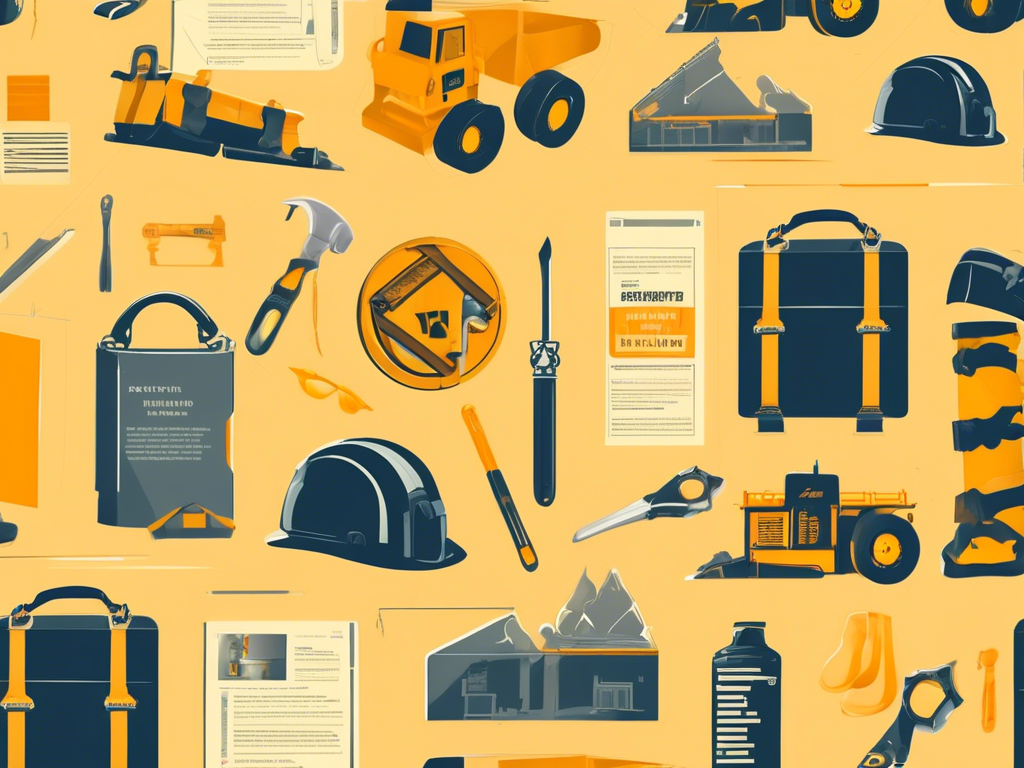
The Importance of Safety Kits in Educational Construction Projects
When educational institutions undertake construction projects, the safety of both workers and students is paramount. Implementing a well-equipped safety kit for construction sites can significantly mitigate risks associated with injuries that may occur during such activities. This specialized kit should include essential supplies tailored to common construction-related incidents, providing immediate access to crucial medical care when needed. ⚠️👷♀️
Key Components of a Construction First Aid Kit
A comprehensive construction first aid kit must contain a diverse range of items specifically designed to address the types of injuries commonly encountered on construction sites. Essential supplies include:
- Heavy-duty adhesive bandages
- Burn treatment supplies, like dressings and ointments
- Splints and cushions for fractures
- Eye wash solutions for chemical exposures
- Cut-resistant gloves and protective eyewear
By ensuring these items are readily available, educational facilities can provide prompt treatment to injured individuals, minimizing the severity of injuries and facilitating faster recovery. 🩺🏗️
Training and Preparedness for Emergencies
It’s vital that staff and students are trained not only to recognize the location of the safety kits for construction sites but also to use the contents effectively. Regular training sessions focusing on common construction injuries—such as cuts or heat-related illnesses—should be conducted. These sessions can empower individuals with the knowledge needed to act swiftly and confidently in emergency situations, promoting overall safety on campus. 📚🧑🏫
Regular Maintenance and Inventory Checks of Safety Kits
To ensure the effective functioning of your construction first aid kit, it is essential to implement a routine maintenance schedule. This involves regularly checking the kit for expired items, replenishing supplies, and keeping everything organized. Consider designating a safety officer to oversee this process, ensuring that all necessary items are available and up to date. Such diligence contributes to a proactive approach to safety within educational facilities. 🔄🔧
Compliance with Local Safety Regulations
Compliance with local regulations regarding safety kits is crucial for educational institutions involved in construction projects. This includes making sure that the safety kits for construction sites meet the required standards set by health and safety authorities. By adhering to these guidelines, schools not only protect themselves legally but also foster a sense of security among staff, students, and parents, reinforcing their commitment to providing a safe learning environment. 📜✔️
Regulations and Recommendations for School First Aid Kits in 2024
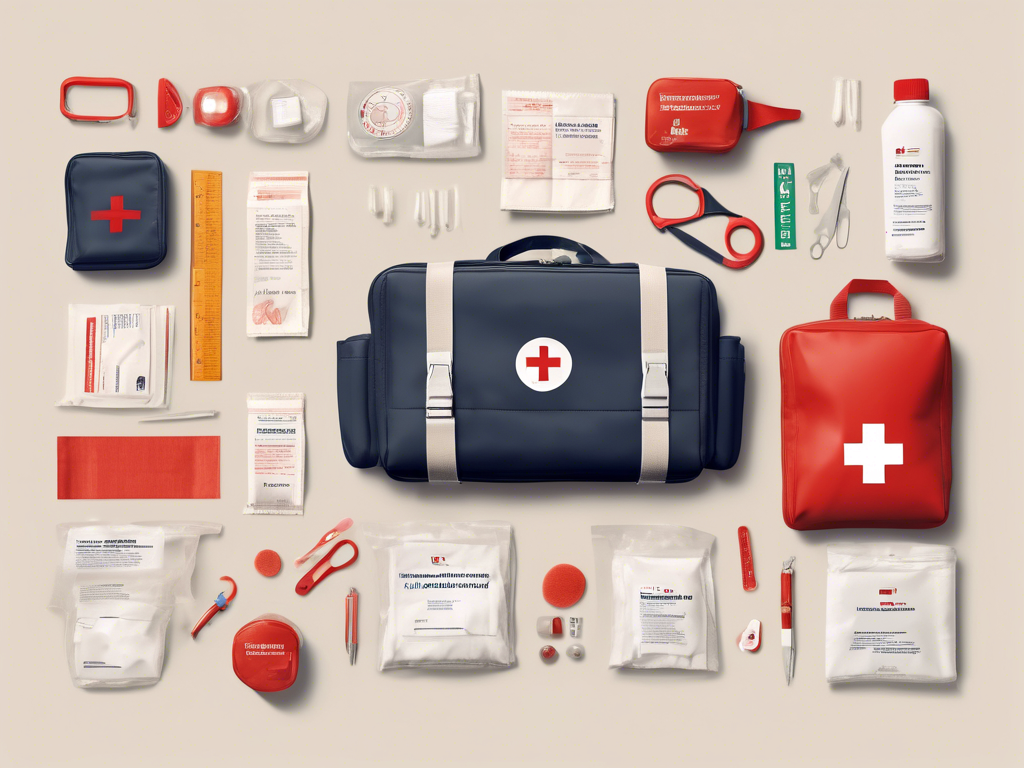
Understanding Local Regulations
Ensuring compliance with local regulations is critical for schools when it comes to maintaining a first aid kit for schools. Different regions have explicit requirements regarding specific items that should be included in first aid kits. Schools must stay informed about these regulations to not only protect their legal standing but also to ensure the safety of their students and staff. Regular checks and updates can help meet these standards and foster a culture of health and safety. 📜✅
Recommended Contents for Diverse Environments
A one-size-fits-all approach is insufficient when equipping schools with first aid kits. Specialized kits, such as a commercial kitchen first aid kit or a construction first aid kit, should contain items tailored to specific environments. Here are some recommended items for various settings:
- Commercial Kitchen: Burn cream, allergy medications, and antiseptics.
- Construction Site: Heavy-duty bandages, splints, and protective eyewear.
- General School Use: Adhesive bandages, gauze pads, and antiseptic wipes.
By having the right supplies on hand based on each environment’s unique risks, schools can provide more effective emergency responses. 🏗️🍽️
Regular Maintenance and Training Guidelines
The effectiveness of a first aid kit for schools greatly depends on its maintenance and the training of staff. Schools should establish a regular maintenance schedule that includes checking expiration dates and replenishing used items. Additionally, conducting training sessions for staff on the contents and proper usage of the kits is vital. This ensures that everyone is prepared to act quickly and confidently during emergencies. 🔄👩🏫
Encouraging Feedback from Staff and Students
Involving staff and students in the customization and evaluation of safety kits for construction sites can lead to improved preparedness. Feedback can provide insights into the unique needs of different areas within the school, leading to more effective first aid kits. Schools should create channels for individuals to voice their opinions on necessary items and experiences with past incidents. 🤔🗣️
Documentation and Record-Keeping Practices
Documenting the contents, maintenance history, and training sessions related to first aid kits for schools is crucial for accountability and continuous improvement. Schools should keep thorough records of inventory checks and any changes made to the kits. This documentation not only helps in maintaining compliance with regulations but also assists in identifying trends in injuries or incidents, allowing schools to adapt their safety protocols accordingly. 📚✍️
How to Train Staff on Using First Aid Kits in Schools Effectively

Understanding the Importance of First Aid Training
Training staff to use the first aid kit for schools effectively is crucial for ensuring a rapid and appropriate response in emergencies. Comprehensive training sessions educate staff on the types of injuries they may encounter and how to manage them using the supplies available in the kits. For instance, personnel must be familiar with treating burns from a commercial kitchen first aid kit or handling cuts and abrasions on a construction site. By prioritizing this training, schools foster a culture of preparedness and safety among their staff. 📚🩺
Creating Accessible Training Resources
To maximize the effectiveness of the training, it’s important to create easily accessible resources that staff can refer to as needed. These resources should include:
- Step-by-step guides on treating common injuries.
- Visual aids highlighting essential supplies found in the construction first aid kit.
- Emergency action plans for various scenarios.
Providing these materials will help reinforce training and empower staff to act confidently during emergencies. Encourage staff to familiarize themselves with these resources regularly. 📖💡
Conducting Hands-On Training Sessions
Practical, hands-on training sessions are vital to ensure staff feel comfortable using the first aid kits. Organize workshops where participants can practice applying bandages, administering CPR, and recognizing signs of shock. This interactive approach helps cement knowledge and builds confidence. Additionally, include simulations addressing specific environments, such as a safety kit for construction sites, so staff can gain experience relevant to their work areas. 🏗️🚑
Incorporating Feedback for Continuous Improvement
After conducting training sessions, actively seek feedback from staff about the effectiveness of the training and the functionality of the first aid kit for schools. Questions to consider include:
- Were the training materials clear and useful?
- Do staff members feel confident using the kits?
- What additional materials or topics would benefit future training?
Using this feedback allows schools to refine their training programs and ensure they meet the needs of their staff. 🤔📈
Regular Refresher Courses and Updates
To keep knowledge and skills sharp, schedule regular refresher courses for staff focused on the use of first aid kits. These updates should coincide with any changes in regulations or when new supplies are added to the kits. Regular training ensures that all staff remain aware of the latest best practices and refreshes their readiness to respond to emergencies effectively. It also affirms the school’s commitment to safety and preparedness, fostering a positive environment for both staff and students. 🔄🏫
Maintaining and Restocking Your School’s First Aid Supplies
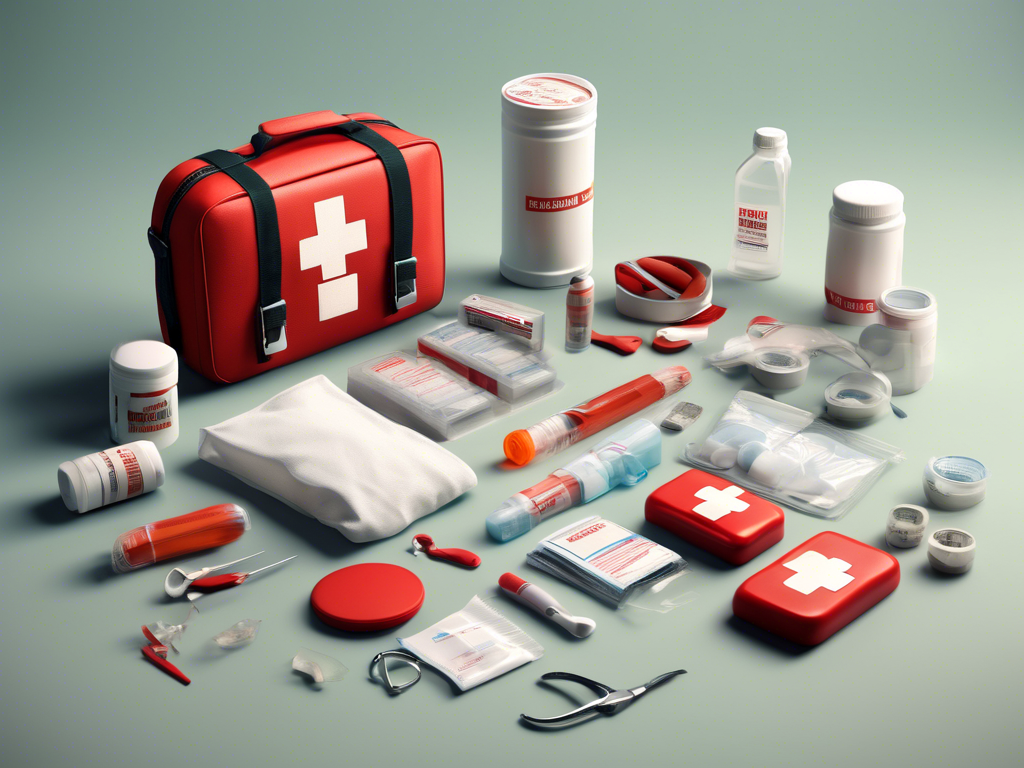
Establishing a Maintenance Schedule
To ensure the continued effectiveness of your first aid kit for schools, it is crucial to establish a regular maintenance schedule. This involves systematically checking supplies, noting expiration dates, and replenishing items that have been used. Schools should consider designating a specific staff member, such as a nurse or safety officer, to oversee this process. A consistent maintenance routine not only guarantees that the kits are always ready for emergencies but also fosters a proactive culture of safety within the school. 📅🔧
Conducting Inventory Audits
Regular inventory audits of your first aid supplies help schools identify what’s missing and what needs restocking. To maintain an effective construction first aid kit, ensure a comprehensive checklist is created that includes all essential items, such as:
- Adhesive bandages
- Gauze pads
- Burn dressings
- Antiseptics
- Splints and eye wash solutions
By conducting these audits at least once per semester, schools can keep their kits adequately stocked and prepared for any situation. 🔍🩹
Leveraging Supplier Relationships
Developing relationships with suppliers of safety kits for construction sites and first aid supplies enables schools to receive timely restocking discounts or recommendations on necessary items. It’s important to stay informed about any new products or materials that could enhance the effectiveness of your first aid kits, especially for unique environments like commercial kitchens. Regular consultations with suppliers can ensure that your kits remain compliant with local regulations while being fully equipped for any emergencies. 📞🤝
Training Staff on Proper Restocking Procedures
Proper training for staff members responsible for maintaining first aid kits for schools is vital. They should be educated on how to identify expired items, correctly restock supplies, and understand the importance of each item within the kit. Conducting periodic training sessions will empower staff to take ownership of this responsibility, ensuring that everyone is aware of the protocols involved in keeping the kits functional and up to date. 📖👩🏫
Encouraging Feedback for Continuous Improvement
Engaging staff members in discussions about the adequacy of the first aid kit for schools can provide valuable insights into what supplies may need to be added or adjusted based on recent incidents. By creating a feedback loop where staff can report on the usage of items and suggest improvements, schools can continually refine their first aid preparations. Consider implementing a suggestion box or periodic meetings to discuss safety and first aid needs. 📣💡
Documenting Restocking Activities
Keeping a thorough record of what items have been restocked and when they were last checked is crucial for accountability and ongoing improvements in your first aid kit for schools. A simple log can help track inventory levels over time and highlight trends in usage. This documentation not only helps maintain compliance with local regulations but also ensures that nothing falls through the cracks, keeping the kits well-stocked and ready for emergencies. 🖊️📂
Summing up
In summary, our exploration of first aid kits for schools has underscored the necessity of having comprehensive, well-equipped kits tailored to various school environments. Whether it’s the bustling activity in a commercial kitchen or the inherent risks present on construction sites, each setting comes with its own set of challenges that require specific first aid solutions. We have discussed the essential items, key features to look for, and the importance of customization to address the diverse needs of educational institutions.
Moreover, maintaining and restocking these kits is crucial to ensuring that they remain effective when emergencies arise. Training staff on how to utilize these kits effectively cannot be overlooked, as preparedness is half the battle in managing crises. The insights shared here highlight that safety isn’t just an add-on but a foundational element of educational infrastructure.
As we move forward into 2024, it is imperative for schools to review and enhance their first aid strategies. Not only does this foster a culture of safety, but it also instills confidence in students, parents, and staff alike. Let us take proactive steps in shaping a safer educational environment, because when it comes to safety, being prepared is not just an option; it’s a necessity. Invest in your school’s future today—make your first aid kits a priority.



